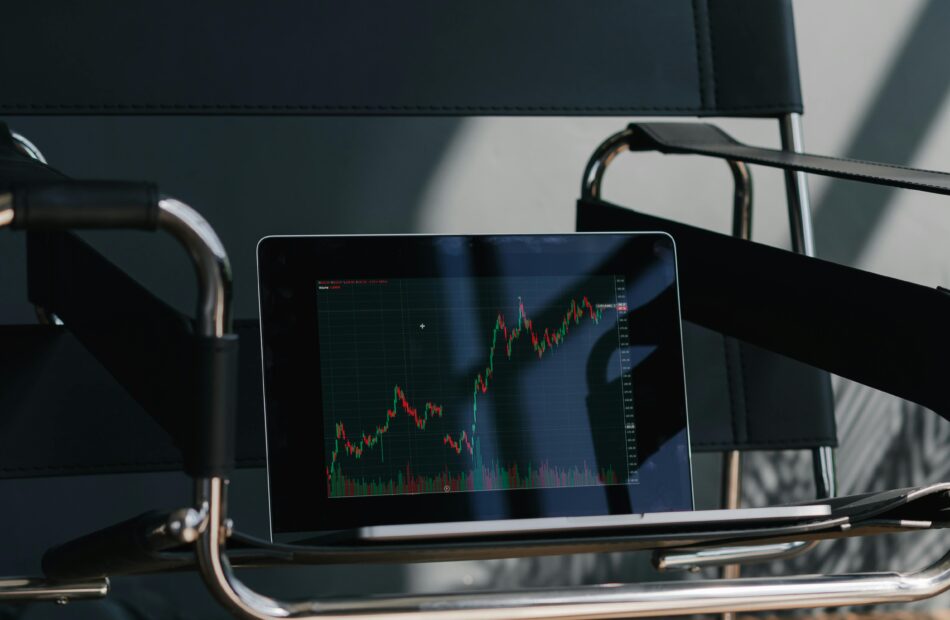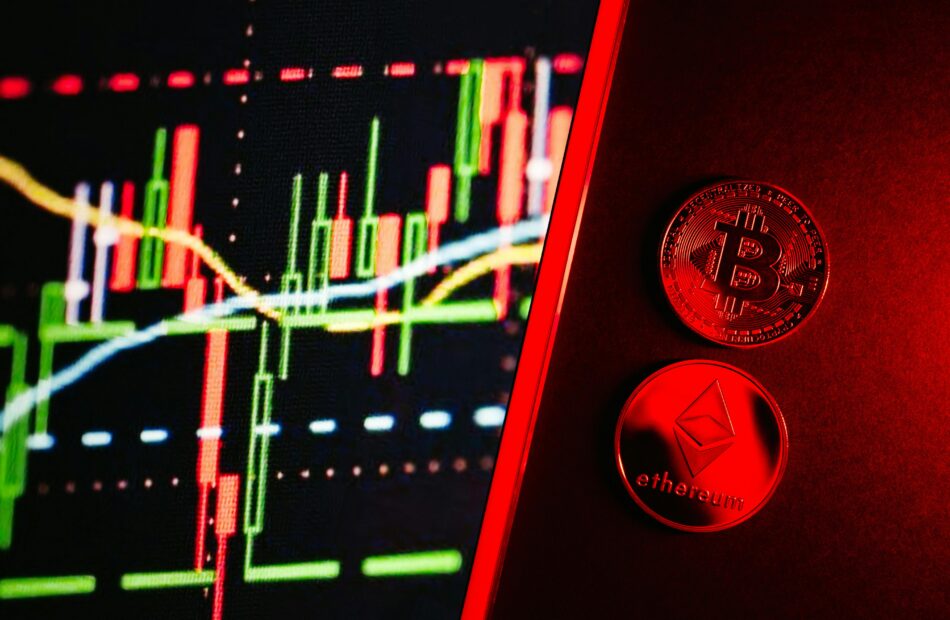Stripe opens testing for new stablecoin product following Bridge acquisition
Stripe, a global payments platform, is building a new US dollar stablecoin product for companies based outside the United States, the United Kingdom and Europe in a move that may further expand the footprint of the dollar around the world.Stripe CEO Patrick Collison confirmed the product on X, posting an invitation for companies interested in testing the solution. The move gained traction after Stripe recently received regulatory approval to acquire the stablecoin payments network Bridge.Bridge’s network competes with banks and companies that use the SWIFT system, a global financial messaging network that facilitates international wire transfers. Two former Coinbase executives, Zach Abrams and Sean Yu, co-founded the company in 2022.Source: Patrick CollisonRelated: Former Square, Coinbase execs raise $58M for Bridge stablecoin networkStablecoin adoption grows in 2025Stripe has a long-standing history with crypto, becoming the first major payments processor to integrate Bitcoin (BTC) in 2014. However, it discontinued support due to Bitcoin’s long transfer times and high transaction fees. The company began rebuilding its crypto team in 2021 as part of a renewed push into the space.Stripe has recently accelerated that push. In October 2024, the company introduced a stablecoin payment option, which users adopted in over 70 countries on the first rollout day. In June that year, Stripe partnered with Coinbase to offer fiat-to-crypto conversions. Collison noted on X that Stripe’s latest crypto initiative is something the company has “wanted to build for around a decade.”Stablecoins are cryptocurrencies designed to maintain a stable value by being pegged to assets like fiat currencies. In the United States, USD-backed stablecoins have increasingly gained attention at the federal level, with figures like US Federal Reserve Chair Jerome Powell calling for dedicated legislation. PayPal launched its own stablecoin in 2023 and recently announced that it would begin offering yield to holders of its token.As of April 25, the stablecoin market cap stands at $237.5 billion, according to DefiLlama.Magazine: Bitcoin payments are being undermined by centralized stablecoins
Traders still offloading TRUMP holdings after dinner announcement — Nansen
Though the identities of many of the top holders of US President Donald Trump’s memecoin were still unknown, blockchain data showed significant outflows over the past seven days — during which time he announced a dinner and White House tour for certain tokenholders. According to data from blockchain analytics firm Nansen as of April 25, the TRUMP memecoin had seen more than $869 million in outflows in the last seven days compared to roughly $96 million in inflows among the top 500 changes. Some of the changes followed Trump announcing that the top 220 TRUMP holders could apply to meet him at a golf club dinner in Washington, DC, with fewer opportunities for a White House tour.“It’s clear that more people took the opportunity to offload their Trump tokens than new buyers came in,” said Nansen. “There still appears to be some interest — either A) to secure the dinner ticket, or B) to capitalize on price volatility. As a result, a few new wallets have entered the top 250 holders, while some previous holders seem to have taken the opportunity to exit their positions.”Top TRUMP memecoin holders as of April 25. Source: TRUMP tokenLaunched in January before Trump took office, his memecoin, and that of his wife, Melania, have seen criticism from US lawmakers and leaders in the crypto industry for potential conflicts of interest. At the time of publication, the identity of many of the top tokenholders and those who might apply to attend the dinner were unknown.Who is investing in Trump’s memecoin?As of April 25, the top tokenholder had 1,176,803 TRUMP memecoins worth roughly $16 million at the time of publication. The wallet holder, under the username “Sun,” had led to speculation that Tron founder Justin Sun — a Trump supporter and investor in the Trump family-backed crypto firm World Liberty Financial — could be among the dinner attendees. Cointelegraph reached out to Sun’s team for comment but had not received a response at the time of publication.Related: Trump memecoin team denies $300K dinner requirement rumorsOther tokenholders included usernames like “elon” and “doge,” though it was unclear if Tesla CEO Elon Musk, also a Dogecoin (DOGE) advocate, was involved in the project. The team behind the TRUMP token controls 80% of the total supply, resulting in many critics suggesting the Trump or someone in his family could still rug-pull investors.Before the 2024 election, Trump arranged a similar dinner at his Mar-a-Lago property in Florida with supporters who purchased non-fungible tokens depicting his mugshot during his arrest for allegedly attempting to subvert the results of the 2020 election. It’s unclear whether any of the same people who attended the May 2024 event are among the top TRUMP memecoin holders.Magazine: Trump’s crypto ventures raise conflict of interest, insider trading questions
SEC chair suggests 'huge benefits' in agency's third crypto roundtable
In one of his first appearances as the recently sworn-in chair of the US Securities and Exchange Commission, Paul Atkins delivered remarks to the agency’s third roundtable discussion of crypto regulation. In the “Know Your Custodian” roundtable event on April 25, Atkins said he expected “huge benefits” from blockchain technology through efficiency, risk mitigation, transparency, and cutting costs. He reiterated that among his goals at the SEC would be to facilitate “clear regulatory rules of the road” for digital assets, hinting that the agency under former chair Gary Gensler had contributed to market and regulatory uncertainty. “I look forward to engaging with market participants and working with colleagues in President Trump’s administration and Congress to establish a rational fit-for-purpose framework for crypto assets,” said Atkins.SEC chair Paul Atkins addressing the April 25 crypto roundtable. Source: SECSome critics of US President Donald Trump see Atkins’ nomination to lead the SEC as a nod to the crypto industry, acting on campaign promises to remove Gensler — the former chair resigned the day Trump took office — and cut back on regulation. Democratic lawmakers on the Senate Banking Committee questioned Atkins on his ties to the industry, potentially presenting conflicts of interest in his role regulating crypto.Related: Atkins SEC era sparks massive industry optimism, crypto execs speak outThe direction of the SEC under new leadership“We’ve noticed that we don’t have to be as concerned […] about being accused of things that we’re not doing, like being broker-dealers for securities,” Exodus chief legal officer Veronica McGregor, who participated in the roundtable, told Cointelegraph on April 24.”It’s just a less scary regulatory environment in general. It is, however, still unclear what the ultimate regs are going to look like for crypto.” The SEC crypto task force is scheduled to hold two more roundtables in May and June to discuss tokenization and decentralized finance, respectively. Commissioner Hester Peirce, who leads the task force, told Cointelegraph in March that she welcomed the opportunity to work with Atkins to “reorient the agency,” hinting at an SEC with regulations more favorable to the crypto industry.In addition to the roundtables, the crypto task force has reported several meetings with digital asset firms to discuss various policies and considerations in developing a regulatory framework.Magazine: SEC’s U-turn on crypto leaves key questions unanswered
Semler Scientific buys another $10M worth of BTC
Semler Scientific has bought approximately $10 million worth of Bitcoin since Feb. 14, the healthcare technology company said in an April 25 statement. The company purchased 111 Bitcoin (BTC) for $10 million at an average price of roughly $90,000 per coin, Semler said. It holds a total of more than 3,300 Bitcoin worth approximately $300 million in aggregate. Semler said its Bitcoin purchases have earned stockholders a Bitcoin yield of 23.5% in the year to date. Bitcoin yield measures the ratio of BTC holdings to outstanding shares, reflecting growing exposure per share for investors. “Semler Scientific uses BTC Yield as a [key performance indicator] to help assess the performance of its strategy of acquiring bitcoin in a manner Semler Scientific believes is accretive to stockholders,” it said. Semler bought 111 BTC since Feb. 14. Source: Eric SemlerThe company said it acquired its Bitcoin treasury for an average price of nearly $89,000. As of April 25, Bitcoin trades at approximately $95,000 per coin, according to data from Cointelegraph. Semler Scientific is a healthcare technology company that develops and sells medical diagnostic products, with a primary focus on detecting chronic diseases. The company has partially financed its Bitcoin purchases by issuing roughly $125 million in new stock, it said. Semler also announced plans to raise $75 million through the private offering of convertible senior notes in January. Corporations are among the biggest Bitcoin buyers. Source: BitcoinTreasuries.NET Related: Bitcoin, showing ‘signs of resilience’, beats stocks, gold as equities fold — BinanceCorporate Bitcoin buyingIn 2024, Bitcoin’s surging price pushed Michael Saylor’s Strategy (formerly MicroStrategy) up more than 350%, according to data from FinanceCharts. Strategy’s success has inspired dozens of other companies, such as Semler, to start accumulating Bitcoin treasuries. Public companies are now among the largest institutional Bitcoin holders. As of April 25, corporate Bitcoin holdings are worth approximately $71 billion in the aggregate, according to data from BitcoinTreasuries.NET.Strategy is still the largest corporate Bitcoin holder, with a treasury worth more than $50 billion. During the week of April 14, Strategy bagged 6,556 Bitcoin for an average price of $84,785 per coin.Among institutional buyers, corporate treasuries still lag exchange-traded funds (ETFs), which cumulatively hold approximately $110 billion in Bitcoin as of April 25, according to Coinglass data. Magazine: Pokémon on Sui rumors, Polymarket bets on Filipino Pope: Asia Express
Nasdaq urges SEC to treat certain digital assets as 'stocks by any other name'
Nasdaq has urged the US Securities and Exchange Commission (SEC) to hold digital assets to the same regulatory standards as securities if they constitute “stocks by any other name,” according to an April 25 comment letter. The exchange said the US financial regulator needs to establish a clearer taxonomy for cryptocurrencies, including categorizing a portion of digital assets as “financial securities.” Those tokens, Nasdaq argued, should continue to be regulated “as they are regulated today regardless of tokenized form.”“Whether it takes the form of a paper share, a digital share, or a token, an instrument’s underlying nature remains the same and it should be traded and regulated in the same ways,” the letter said. It also proposed categorizing a portion of cryptocurrencies as “digital asset investment contracts,” to be subject to “light touch regulation” but still overseen by the SEC. Nasdaq’s April 25 letter to the SEC. Source: NasdaqRelated: Certain stablecoins aren’t securities, SEC says in new guidanceRegulatory U-turnThe SEC has dramatically pivoted its stance on cryptocurrency oversight since US President Donald Trump took office in January. Under the leadership of former Chair Gary Gensler, the SEC took the position that practically all cryptocurrencies, with the exception of Bitcoin (BTC), represent investment contracts and therefore qualify as securities. This stance led the agency to bring upwards of 100 lawsuits against crypto firms for alleged securities law violations.However, under Trump nominee Paul Atkins, who was sworn in as chair on April 21 after a lengthy Senate confirmation, the SEC has claimed jurisdiction over a narrower segment of cryptocurrencies. In February, the agency issued guidance stating that memecoins — if clearly identified as purely speculative assets with no intrinsic value — do not qualify as investment contracts pursuant to US law. In April, the SEC said that stablecoins — digital tokens pegged to the US dollar — similarly do not qualify as securities if they are marketed solely as a means of making payments.Stablecoin market overview. Source: RWA.xyzIntegrating crypto into TradFiIn its April 21 letter, Nasdaq said existing financial infrastructure “can readily absorb digital assets by establishing the proper taxonomy and calibrating certain rules to reflect what is truly new and novel about digital assets.”The Depository Trust & Clearing Corporation (DTCC) — a private US securities clearinghouse closely overseen by the SEC — has been laying the foundation for integrating blockchain technology into regulated financial markets. In March, the DTCC committed to promoting Ethereum’s ERC-3643 standard for permissioned securities tokens.Magazine: Ethereum is destroying the competition in the $16.1T TradFi tokenization race
Crypto Biz: Cantor Fitzgerald crypto play, ETF inflows highlight industry’s big sentiment shift
US President Donald Trump’s first 90 days in office have been miserable for Bitcoin (BTC) and the broader cryptocurrency industry. Despite positive regulatory developments, culminating in the first-ever White House crypto summit on March 7, digital asset prices have been dragged down by the currents of trade war and fear of recession.However, crypto saw a huge sentiment shift this week amid reports that Trump was backing off on his full-scale tariff war against China. It also didn’t hurt that Trump’s media empire, Trump Media and Technology Group, inked a deal with Crypto.com for its forthcoming Made in America exchange-traded funds (ETFs).This week’s Crypto Biz newsletter covers renewed inflows into Bitcoin ETFs, a potential crypto venture backed by Cantor Fitzgerald, and Coinbase’s possible pursuit of a federal banking charter. It wraps up with a look at Tesla’s decision to hold its Bitcoin position despite a disappointing earnings quarter.Bitcoin ETFs see largest inflows since JanuaryCapital is flowing back into US spot Bitcoin ETFs, highlighting a positive sentiment shift among institutional investors. According to Glassnode data, the 11 spot Bitcoin ETFs registered $381.3 million in net inflows on April 21, with the ARK21Shares Bitcoin ETF accounting for nearly a third of the total. One day later, the 11 funds registered $912.7 million in net inflows, the largest since January when Bitcoin was trading at all-time highs. The ARK21Shares, Fidelity and BlackRock Bitcoin funds saw the largest inflows on April 22. As billions flowed back into Bitcoin ETFs, spot BTC prices climbed back to $94,000 on April 23, pushing the total cryptocurrency market cap close to the $3 trillion mark again.Net inflows to US spot Bitcoin ETFs are surging again. Source: CoinglassCantor Fitzgerald is backing $3B crypto venture: ReportCantor Fitzgerald is reportedly in talks with Softbank, Tether and Bitfinex to establish a $3 billion crypto acquisition company called 21 Capital. According to an April 23 report by the Financial Times, the new company aims to capitalize on the favorable crypto environment in the United States following US President Donald Trump’s election. It also seeks to emulate the success of Strategy, the business intelligence firm turned Bitcoin bank that has amassed more than 534,000 BTC. The report suggested that stablecoin issuer Tether will contribute $1.5 billion to the new venture. Softbank is expected to add $900 million and Bitfinex another $600 million. 21 Capital is reportedly eyeing another $350 million raise via convertible bonds alongside a $200 million private equity placement. The proceeds will reportedly be used to buy Bitcoin.Cantor Fitzgerald is led by Brandon Lutnick, the son of Howard Lutnick (right), who became President Trump’s Secretary of Commerce. Source: White HouseCoinbase weighs US banking licenseCoinbase is considering applying for a United States federal bank charter, potentially signaling the cryptocurrency exchange’s intention to move into traditional banking services.A spokesperson for Coinbase confirmed to Cointelegraph that the exchange was considering this option, but did not elaborate on the reasons why.“This is something Coinbase is actively considering but has not made any formal decisions yet,” the spokesperson said.A US federal bank charter is significant because it allows licensees to perform core banking activities, including deposit taking and lending. For crypto exchanges like Coinbase, obtaining such a charter could represent a major step toward integrating traditional banking with digital assets.Tesla HODLs Bitcoin despite earnings slumpElectric vehicle maker Tesla reported disappointing first-quarter earnings this week but opted to hold onto its Bitcoin investments, signaling that Elon Musk’s company still sees significant upside in digital asset prices.Tesla’s net income plunged 71% in the first quarter, with revenue falling 9% and automotive sales down 20% year over year.Tesla’s disappointing earnings highlight the folly of mixing business and politics, with the results partly attributed to Musk’s role in Trump’s White House.Despite the earnings slump, Tesla held firm on its digital asset position, maintaining 11,509 BTC — unchanged since 2022. At current prices, that stake is valued at just under $1.1 billion.Tesla’s Bitcoin investments. Source: BitcoinTreasuries.NETCrypto Biz is your weekly pulse on the business behind blockchain and crypto, delivered directly to your inbox every Thursday.
BlackRock, five others account for 88% of all tokenized treasury issuance
New data from RWA.xyz, a platform tracking tokenized real-world assets, shows that six entities are responsible for 88% of all tokenized US Treasurys. The data suggests a concentration among a few funds as the market continues to develop.The largest issuer of tokenized treasures continues to be BlackRock. The company’s tokenized US treasury fund, called BUIDL, has a market capitalization of $2.5 billion, 360% higher than its nearest competitor. BlackRock disclosed a total of $11.6 trillion in assets under management in the first quarter of 2025. Rounding out the top six are Franklin Templeton’s BENJI, with a market capitalization of $707 million, Superstate’s USTB at $661 million, Ondo’s USDY at $586 million, Circle’s USYC at $487 million, and Ondo’s OUSG fund holding assets worth $424 million. Together, those six funds account for 88% of all tokenized treasuries issued.A chart of the top six tokenized treasury funds by market cap. Source: RWA.xyzAccording to RWA.xyz data, the largest tokenized treasury funds have seen consolidation since the beginning of 2025. Of the top six funds, only Circle’s USYC experienced a decline in market cap over the past few months. Notably, BUIDL’s market cap increased by 291% from Jan. 1 to April 24. It now makes up 41.1% of the total tokenized US Treasurys market cap.Tokenized treasury funds market cap over time graph. Source: RWA.xyzCentralization of tokenized RWAs has a dark side: MEXCAccording to Tracy Jin, chief operating officer of MEXC, the centralization of tokenized real-world assets has a dark side, especially if those RWAs are on permissioned or semi-centralized blockchains.”Most tokenized assets will be issued on permissioned or semi-centralized blockchains,” Jin told Cointelegraph. “This gives authorities the power to issue restrictions or confiscate assets. The tokenization of assets such as real estate or bonds is still tied to the national legal system.”The tokenized real-world asset market is expected to boom in 2025. The trend is driven by regulatory clarity, interoperability, solutions for liquidity, the evolution of identity from physical to digital, and even fractional ownership. According to RWA.xyz, the sector total market cap reached a high of $21.3 billion on April 21. Magazine: Tokenizing music royalties as NFTs could help the next Taylor Swift
Crypto firms launch Wall Street-style funds: Finance Redefined
Cryptocurrency firms and centralized exchanges are launching more traditional investment offerings, bridging the divide between traditional financial and digital assets.With investors seeking more flexible product offerings under one platform, the “line is blurring” between traditional finance (TradFi) and the cryptocurrency space, as the two financial paradigms signal a “growing synergy,” according to Gracy Chen, CEO of Bitget, the world’s sixth-largest crypto exchange.In the wider crypto space, Securitize partnered with Mantle protocol to launch an institutional fund that will generate yield on a basket of diverse cryptocurrencies, similar to how traditional index funds track a mix of stocks.The developments come after crypto investor sentiment staged a significant recovery, moving from “fear” to “neutral” for the first time since January 2025.Fear & Greed Index chart. Source: CoinMarketCapInvestor sentiment was bolstered after US President Donald Trump said that import tariffs on Chinese goods will “come down substantially,” adopting a softer tone in negotiations for the first time since the reciprocal tariff announcement.Crypto firms moving into Wall Street territoryCryptocurrency firms and exchanges are increasingly moving into Wall Street territory, launching more traditional investment offerings and showcasing the increasing connection between crypto and traditional finance (TradFi).“There’s a growing synergy between traditional financial investments and the emerging crypto space,” according to Gracy Chen, the CEO of Bitget, the world’s sixth-largest crypto exchange.“Crypto players are now checking out traditional finance as they see the opportunity to bridge it,” Chen told Cointelegraph.“The lines are blurring. Investors want flexibility, and products that can straddle both worlds are naturally attractive,” Chen said. “Some players see TradFi as a safety net; others, like Bitget, see it as a launchpad for broader adoption.” She added:“In a volatile market, integration is smarter than isolation.”Continue readingSecuritize, Mantle launch institutional crypto fundTokenization platform Securitize partnered with decentralized finance (DeFi) protocol Mantle to launch an institutional fund designed to earn yield on a diverse basket of cryptocurrencies, the companies said. Similar to how a traditional index fund tracks a mix of stocks, the Mantle Index Four (MI4) Fund aims to offer investors exposure to cryptocurrencies, including Bitcoin (BTC), Ether (ETH), and Solana (SOL), as well as stablecoins tracking the US dollar, Securitize said in an April 24 announcement. The fund also integrates liquid staking tokens — including Mantle’s mETH, Bybit’s bbSOL, and Ethena’s USDe — in a bid to enhance returns with onchain yield, according to the announcement.The launch comes as retail and institutions alike increase exposure to cryptocurrencies, particularly Bitcoin, as a hedge amid escalating macroeconomic uncertainty.Continue readingMantra says CEO has begun the process of burning his 150 million OM tokensMantra founder and CEO John Patrick Mullin has started unstaking 150 million of his Mantra (OM) tokens in preparation for sending them to a burn address in an attempt to restore the token’s value by tightening supply. Mantra announced on April 21 that the unstaking process had begun, and would be completed by April 29, at which point Mullin’s Mantra (OM) tokens will be sent to the burn address and permanently removed from circulating supply.Source: John Patrick MullinMullin said it was a “first step in rebuilding trust with the community, but far from the last.” Mantra said it was also in talks with “key ecosystem partners” about burning a further 150 million OM to bring the total burn amount to 300 million.With 150 million fewer OM, Mantra’s total supply will decline to 1.67 billion, and its number of staked tokens will drop by over 26% to 421.8 million OM from 571.8 million OM. Continue readingSymbiotic raises $29 million for staking-based universal coordination layerCryptocurrency staking protocol Symbiotic closed a $29 million Series A funding round led by Web3-focused investment firms, including Pantera Capital and Coinbase Ventures, to support the launch of a new economic coordination layer for blockchain security.The round included more than 100 angel investors, with participation by major industry players Aave, Polygon and StarkWare, the company said in an April 23 announcement shared with Cointelegraph.The closing of the funding round also marks the launch of Symbiotic’s Universal Staking Framework, which aims to be an economic coordination layer that bolsters blockchain security via staking.The new staking layer enables the use of any combination of cryptocurrencies to secure networks, including monolithic and modular layer-1 and layer-2 blockchains, the announcement said.“We’ve created a modular framework that lets protocols evolve security models over time while efficiently coordinating risk,” Misha Putiatin, co-founder of Symbiotic, told Cointelegraph. “This empowers protocols at every stage of their lifecycle to evolve their security models seamlessly without rebuilding infrastructure.”Continue readingSEC delays decision on Polkadot ETFThe US Securities and Exchange Commission (SEC) delayed a decision on whether to approve a proposed exchange-traded fund (ETF) holding Polkadot’s native token, regulatory filings show. According to an April 24 filing, the regulator has extended its deadline for a final ruling until June 11, nearly four months after the Nasdaq sought permission to list Grayscale Polkadot Trust on Feb. 24.Grayscale’s ETF filing adds to a roster of about 70 proposed ETFs awaiting SEC approval, including funds holding altcoins, memecoins and crypto-related financial derivatives, according to Bloomberg Intelligence. Asset managers are pitching ETFs for “[e]verything from XRP, Litecoin and Solana to Penguins, Doge and 2x Melania and everything in between,” Bloomberg analyst Eric Balchunas said in an April 21 post on the X platform. Asset manager 21Shares is also awaiting permission to list its own Polkadot ETF.Continue readingDeFi market overviewAccording to data from Cointelegraph Markets Pro and TradingView, most of the 100 largest cryptocurrencies by market capitalization ended the week in the green.The Official Trump (TRUMP) token rose over 73% as the week’s biggest gainer, after the president announced an exclusive in-person dinner for the top tokenholders. The Sui (SUI) token rose over 69% as the week’s second-best performing token.Total value locked in DeFi. Source: DefiLlamaThanks for reading our summary of this week’s most impactful DeFi developments. Join us next Friday for more stories, insights and education regarding this dynamically advancing space.
Nigerian court green lights arrest for six CBEX promoters — Report
A high court in Nigeria has reportedly granted the country’s Economic and Financial Crimes Commission (EFCC) the authority to arrest six individuals who were allegedly involved in investment fraud at a cryptocurrency exchange.According to an April 24 report from Nigerian news outlet The Cable, the Federal High Court in Abuja approved the arrest and detention of six people who promoted the Crypto Bridge Exchange (CBEX), allegedly defrauding investors out of 1 billion naira, or roughly $620,000. The suspects in the cases did not appear to have been arrested at the time of publication. “[The defendants used] their company ST Technologies International Limited, promoted another company Crypto Bridge Exchange by making adverts, and lured unsuspecting members of the public to invest cryptocurrencies on the CBEX investment platform,” the EFCC reportedly said in its motion for the arrest.The legal case marked another instance of Nigeria cracking down on representatives of crypto exchanges in the country. In February 2024, Nigerian authorities detained and arrested two Binance executives who were visiting to discuss the exchange’s activities. Related: Nigeria still open to crypto business despite rocky past: ReportIn April, many CBEX users began reporting that they could not withdraw their funds from the exchange, resulting in online outrage that led to real-world violence. A group of investors stormed CBEX’s local office in Ibadan, looting items like the air conditioning unit in an apparent attempt to recuperate some of their losses.The case against Binance is still onThe Nigerian case against Binance, in which a US citizen, Tigran Gambaryan, was detained and whose health reportedly deteriorated as he waited in prison, drew criticism from many in the crypto industry and US lawmakers. He was held for eight months on tax and money laundering charges before being released to US custody.Nigeria’s tax evasion case against Binance continues to move forward after Gambaryan’s release, though the exchange has no office in the country. Cointelegraph reached out to a representative from Nigeria’s Ministry of Information for comment but did not receive a response at the time of publication.Magazine: Financial nihilism in crypto is over — It’s time to dream big again
If Trump fired Powell, what would happen to crypto?
Recent months have seen the ebb and flow of a certain pattern: US President Donald Trump will take some objectively harmful action to the US economy, and the markets will crash. Seeing this, Trump has turned to Jerome Powell, chair of the Federal Reserve, and now demands he lower the Fed Funds Rate — the rate at which the Fed lends money to banks. And the steely eyed Powell will say “No.”Trump wants to lower rates because doing so is an effective cash injection into the United States economy, stimulating activity and lifting the market. This, he believes, will make him appear successful. Powell wants to follow rigorous economic standards to set rates to carefully balance the Fed’s dual mandates of maximizing employment and maintaining stable prices. He also wants to maintain the Fed’s independence from political pressure and, crucially, maintain the Fed’s appearance of independence from political pressure. If the markets believe that the central bank’s independence has failed in the US, it may become more difficult to sell US Treasury Bills, the United States’ sovereign debt. That is a problem in the fundamental sense that the US will have to pay more to borrow money, making it poorer — but it is an especially acute problem now because the US already has an enormous, $30-trillion pile of debt which it has to periodically refinance.If it is forced to refinance at higher rates because markets do not trust the US government anymore, then an ever greater percentage of GDP will be absorbed by the cost of interest, and, as the kids say, the United States will be cooked. That dance takes us to now. Last week, Trump repeatedly intimated that he would like to fire Powell, and the market didn’t like it. On Monday, Trump provoked a crash by calling Powell a “major loser” on Truth Social. In response, Treasury Secretary Scott Bessent has reportedly voiced concerns with the risks of firing Powell to Trump, who seems, for now, to have acquiesced, stating Tuesday that he would not fire his Fed chair. Trump and Powell in 2017. Source: TrouwStill, this process feels more like a spiral than anything else, and many market watchers are waiting for the next shoe to drop. That forces the question: if Trump does go through with his base instincts and axes Powell, what will be the result? In particular, what effect will this have on the cryptocurrency industry?Cracking the FedIt bears mentioning that the President is not supposed to be able to fire the Fed chair at will. Section 10 of the Federal Reserve Act of 1913 states that “each member shall hold office for a term of fourteen years from the expiration of the term of his predecessor, unless sooner removed for cause by the President.”This language may appear ambiguous, but in the 1935 case Humphrey’s Executor v. United States, the Supreme Court ruled that the Constitution does not give the President an “illimitable power of removal” and so the President’s removal power is limited by statutory language. This decision ratified the concept of “independent agencies,” which reside within the executive branch, but have independent authority. While a number of agencies have this characteristic, including the SEC, the CFTC, and the FTC, the Fed is the most important. Related: US gov’t actions give clue about upcoming crypto regulationEconomists do not think much about the political control of central banks. Politicians have relatively short-term incentives, thinking in years or election cycles. This inherently pushes them to prefer short-termist policies, of which hot cash injections are the purest form. However, fiscal and monetary policy are delicate arts that often animate painful policy choices. In a classic example, Richard Nixon pressured then-Fed chair Arthur Burns to pursue expansionary monetary policy in the lead up to the 1972 election, believing that it would help his reelection odds. Nixon won that election in a landslide, but soon followed catastrophic “stagflation” that crippled the United States economy for a decade, and indeed may still be felt in the industries which hollowed out during that period. Contrast this with the policies of Paul Volcker, who, after this devastating period of stagflation, implemented a vicious series of rate increases between 1979 and 1987, which caused the “Volcker Shocks”, a series of painful recessions. However, the effect of this policy was to eventually strangle inflation and herald in the boom times of the 90s, facilitating Bill Clinton’s remarkable fiscal policy. No politician could have made these choices, none will in the future, and that is the rub. Economists — and, crucially, markets — believe deeply that the Fed must remain independent or else the entire economic fabric of American society risks collapse. This is no hyperbole — nations with politically controlled central banks like Weimar Germany, Peronist Argentina and Venezuela have experienced such crippling hyperinflation that it led variously to multigenerational geopolitical backsliding, reports of citizens starving and eating rats, and the rise of Adolph Hitler. This is serious stuff.To fire Powell, Trump will first have to defeat the Humphrey’s Executor precedent, a prospect that many legal scholars believe likely in light of the current Supreme Court composition. This is a Rubicon which, once crossed, marks a point of no return. Not just Trump, but every President who follows will have plenary legal authority to direct all executive officers — Fed Chair included — at their will. Most believe this will lead to ruin. But disaster or no, it will be a test for cryptocurrency. The original Bitcoin White Paper aimed to disintermediate financial transactions from “financial institutions serving as trusted third parties.” If the Fed falls, and US monetary policy is unmoored from sound judgment, the thesis of cryptocurrency’s early years will be put in stark relief. As Trump has provoked capital flight in recent weeks, investors have sought safety in various assets. Traditionally, any time there was a crisis, sophisticated parties fled risk assets into US Treasurys. The thinking was that these were riskless assets. Well, those days may be done. Ten year bond yields approached 5% during the peak of the Tariff Crisis and have not yet fully returned to previous lows. If Trump breaks the Fed, these outflows will be a drop in a bucket in a river, and that money may move into cryptocurrencies. Trump admonishes Powell, referred to here as “Mr. Too Late.” Source: TrumpHistorically, the price of Bitcoin has tightly tracked the Nasdaq (albeit with a multiplier). However, since the Tariff Crisis, while US securities prices have remained largely depressed, Bitcoin has miraculously begun to pump. This has led some to speculate that we are witnessing the long-prophesied “decoupling”, wherein crypto-assets will fulfill their original purpose and move independently from centralized assets. It is impossible to say if this will or will not happen, but if Trump gives Powell the boot, we will find out for sure. Out of the frying pan, and into the fire Of course, world-historical collapse can’t be all good for crypto, and there will be significant pain across a variety of surfaces from this crisis as well. In the first instance, stablecoins will feel dire consequences almost immediately. In the last decade, two USD-denominated stablecoins — USDC and USDT — have dominated the market. Their issuers, Circle and Tether, are both important systemic institutions and major buyers of US Treasurys, which collateralize the majority of their stablecoin obligations. An immediate result of a Fed Crisis could be a Treasury default. The economist Noah Smith has speculated that Trump might try to write down the US’s sovereign debt:“I suspect Trump will do something more like what he used to do as a businessman when his debt went bad — look for a cheap bailout, and if one doesn’t emerge, declare bankruptcy.”Indeed, the President has hinted darkly at this prospect himself, in February suggesting that they might rely on pretense to mark the bills down:”There could be a problem – you’ve been reading about that, with Treasuries and that could be an interesting problem…It could be that a lot of those things don’t count. In other words, that some of that stuff that we’re finding is very fraudulent, therefore maybe we have less debt than we thought.”Related: Atkins becomes next SEC chair: What’s next for the crypto industryA sovereign default would immediately affect Circle and Tether by marking down the value of their collateral. This, in turn, could leave the stablecoins undercollateralized, which might provoke a bank run. The markets may ultimately stabilize, but events could easily turn the other way, leading to collapse of major stablecoins. This in turn would have numerous second-order effects, as smart contracts holding stables as collateral began liquidating positions, and contagion swept the rest of the market. Interestingly, these mechanical consequences may be less dire than the political costs of a Fed Crisis, because treasuries are not the only asset that has systemic importance to crypto. The US dollar has been the world’s reserve currency for many, many years. There are lots of good reasons for this; it is relatively strong and stable, so it is good to settle trade with. But if the government backing it ceases to be strong and stable, this paradigm will likely shift. And as more trade is executed in euro or yuan-denominated accounts, regulators in the EU and China will, in turn, have much more control of the flows of fiat currency through cryptocurrency. One prominent cryptocurrency attorney, who chose not to be named for fear of political reprisal, speculated exactly this:“I think China will fill a lot of the void and EU will fill most of the rest. Neither would be good for crypto generally between CCP and EU over-regulating in different ways for different goals. This seems bad.”This might prompt flight to uncollateralized crypto-primitive assets, but there is essentially no precedent for such assets being used at scale for real-world transactions. It is just as likely that a stablecoin crisis could simply kneecap the industry for years as it is catching its stride.Ultimately, nobody knows whether Trump will fire Powell, or even if he can. Nobody knows what consequences might flow downstream from his decisions. But if a butterfly flapping its wings in Argentina can cause a tornado in Prague, then Donald Trump muttering incantations in the West Wing might vindicate or destabilize the blockchain forever.Like it or not, we’re all along for the ride. Magazine: UK’s Orwellian AI murder prediction system, will AI take your job? AI Eye










